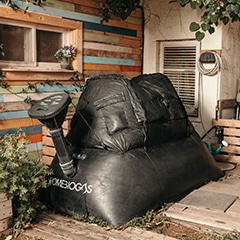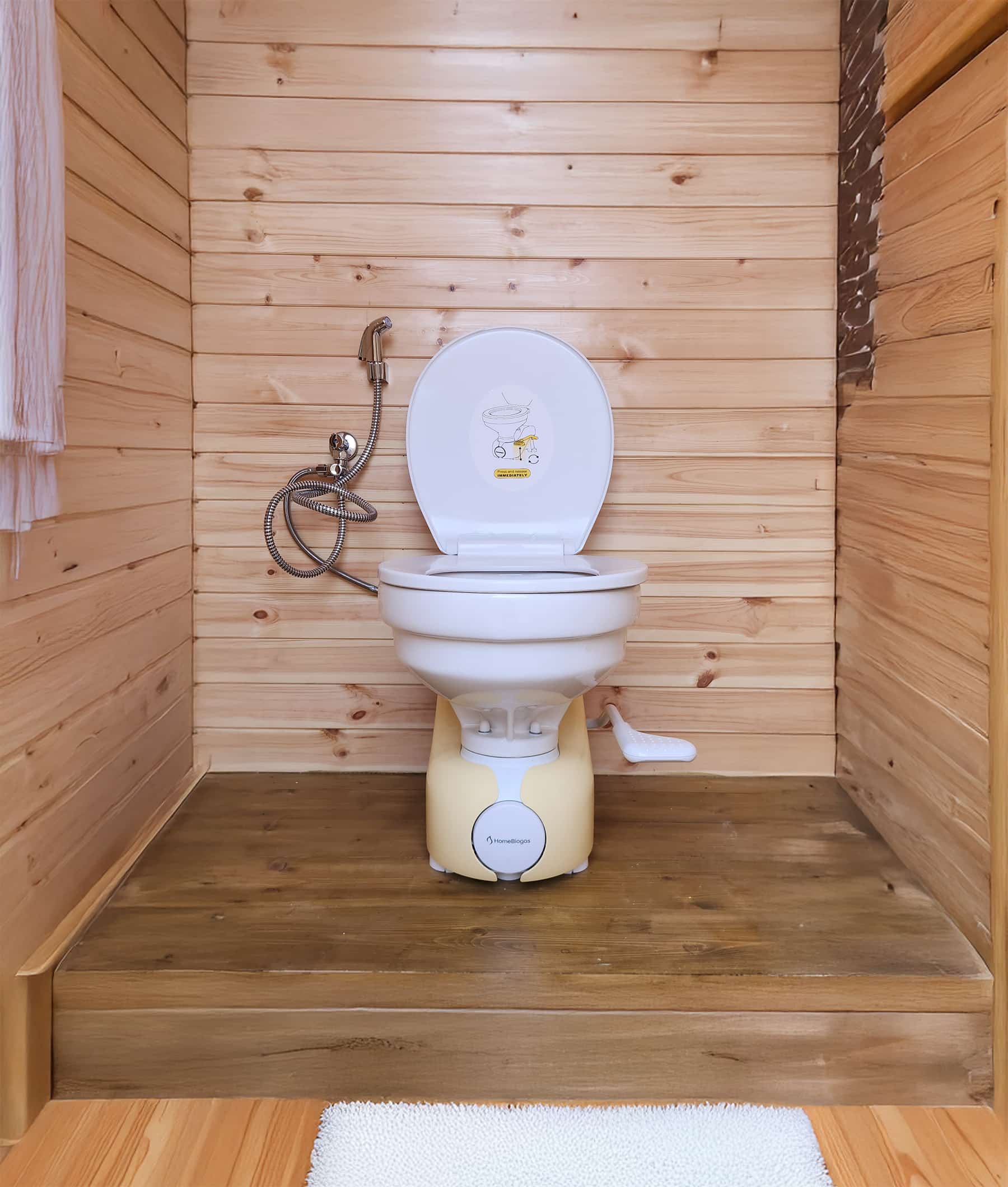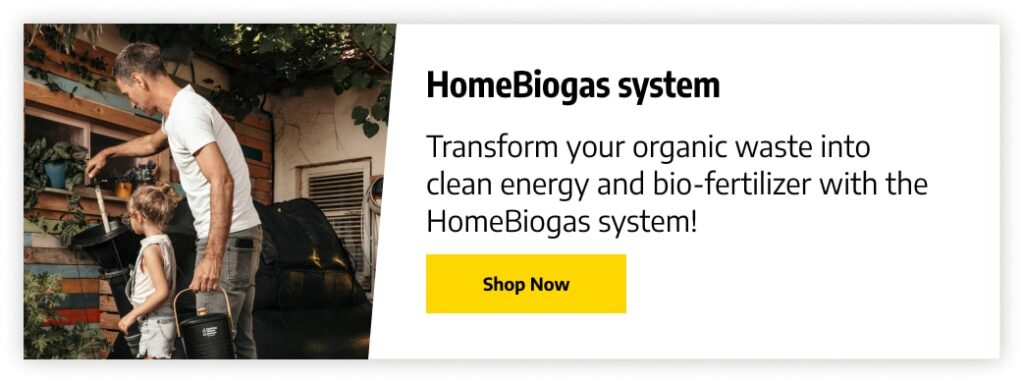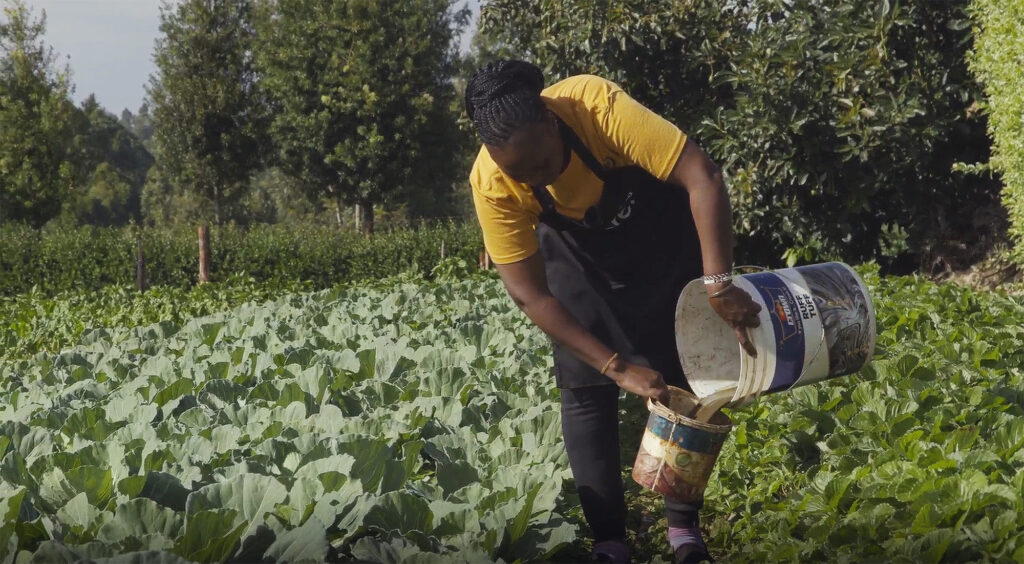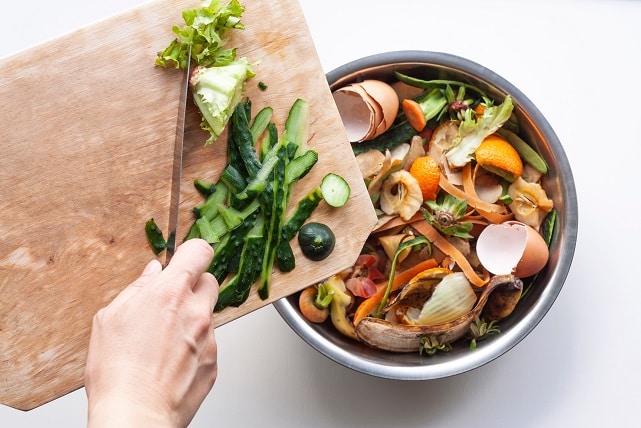
Enter the Exciting World of Kitchen Waste Composting
Making compost from kitchen waste is a way to turn leftover food into a soil amendment called compost.
Instead of throwing food scraps in the regular trash, you put them in a composting bin. This dedicated container creates the proper environment for bacteria and fungi to decompose the organic materials. The process continues until the food scraps become a valuable mix of nutrients that nurture the soil and support plant growth.
Benefits of Kitchen Waste Composting
- You significantly reduce the amount of lost resources. In the US, 24% of landfill space is taken up by food waste, with a significant impact on the economy and the environment. Instead of throwing leftovers and scraps in the trash, composting allows you to put them to good use.
- You avoid further soil, water, and air pollution. When kitchen waste ends up in landfills, it contributes to methane production. When you make compost from kitchen waste in a controlled environment like a bin or composting pile, you reduce greenhouse gas emissions and help combat climate change.
- You produce a natural and nutrient-rich soil amendment that improves soil structure for better airflow and water retention, significantly impacting crop quality.
- Composting promotes sustainable gardening practices. It closes the loop by recycling food scraps back into the soil, reducing the reliance on synthetic fertilizers and chemical additives.
- As you stop buying expensive fertilizers, you get to cut down gardening costs.
- Composting from kitchen waste is a hands-on way to learn about the environment and the impact of our daily actions. It’s also an excellent opportunity for education, particularly for children who learn about the importance of recycling and sustainability.
What Types of Food Waste Can Be Composted?
- Fruit and vegetable leftovers: peels, cores, rinds, and any parts of fruits and vegetables that are not edible.
- Tea bags, coffee grounds, and filters — as long as you remove any staples or synthetic materials before composting
- Crushed eggshells
- Nutshells from walnuts, almonds, or pistachios — as long as you avoid treated or painted nuts
- Leftover bread, cooked rice, pasta, and other grains
- Grass clippings
- Cut flowers and houseplants
- Herbs and spices
- Nutrient-rich liquids: leftover vegetable broth or water used to boil vegetables
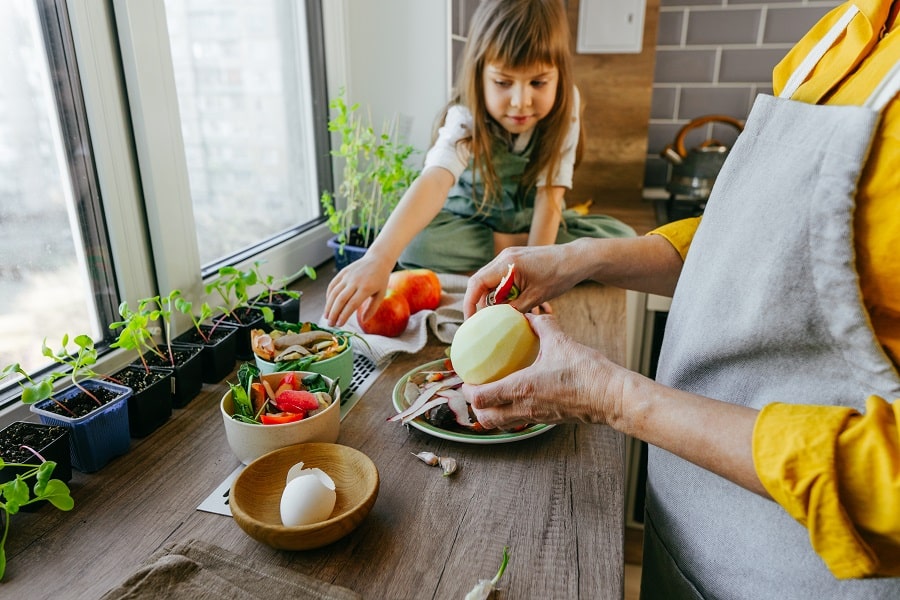
5 Methods to Make Kitchen Waste Composting Easily
Composting with a Backyard Compost Pile
Choose a suitable location in your backyard with good drainage and partial sunlight. Begin the compost pile by layering green materials with brown materials such as dry leaves, straw, or shredded newspaper. The green materials provide nitrogen, while the brown materials supply carbon, ensuring a balanced compost mix.
As you add more food scraps to the compost pile, periodically turn or mix the contents to introduce oxygen and facilitate decomposition. The microorganisms responsible for breaking down the organic matter thrive in this aerobic environment, and the heat generated during the process helps speed up decomposition.
Regularly monitor the moisture level of the compost pile, aiming for a damp, sponge-like consistency.
Outdoor Composting with Compost Bins
Compost bins accelerate the decomposition process, making it an efficient option for those with limited space or who prefer a neater approach. To install a compost bin, select a suitable spot in your yard with good drainage and access to sunlight.
The bin provides a barrier against animals and pests that might disturb the composting materials. Monitor the moisture levels to ensure the compost remains damp but not soaked. Aeration is also crucial to ensure bacteria get enough oxygen.
Also, avoid overfilling the bin because it might slow the decomposition process.
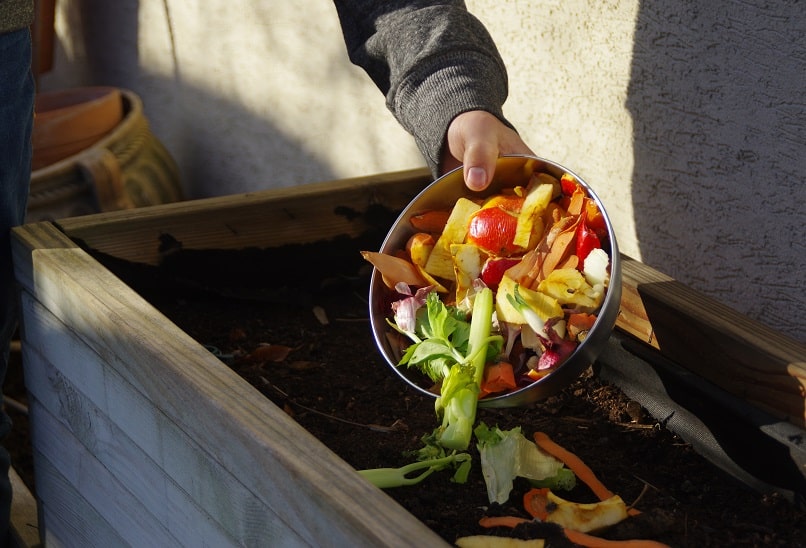
Vermicomposting (Worm Composting)
Red worms, like red wigglers, are excellent composters and will happily eat your kitchen scraps.
Keep the worm bin indoors or in a sheltered area outside. Add food scraps and cover them with bedding like shredded newspaper or coconut coir. The worms will do the rest, turning your food waste into an excellent soil amendment.
Indoor Composting with a Bokashi Composting Bin
Bokashi composting is a fermentation-based method for indoor composting in small spaces. It implies using a Bokashi bucket or bin to mix your kitchen waste and a Bokashi bran — rice bran or wheat bran inoculated with beneficial microorganisms, typically a mix of lactic acid bacteria, yeasts, and other microbes.
Since Bokashi composting relies on anaerobic digestion to break down the food waste, you want to seal the container to give microbes the right environment to thrive. The tight-fitting lid will also prevent odors and speed up fermentation. Once the bucket is full, mix the fermented food waste into garden beds or add it to a traditional compost bin.
Trench Composting
Dig a trench about 8 to 12 inches deep in your garden soil. Fill it with food scraps as you do your daily cooking and gardening. Cover the leftovers with a thin layer of soil after each addition. Over time, the buried food waste will decompose, enriching the soil with nutrients.
The food scraps and grass clippings break down right where it’s needed—among your plants. Plus, it’s a discreet method that reduces the risk of attracting pests or producing unpleasant odors associated with traditional compost piles.
Getting Started with Kitchen Waste Composting
Before you start, you want to decide what method works best for you. Consider available space, time commitment, and the desired composting speed.
Traditional backyard composting is excellent when you have sufficient outdoor space and enough time to actively manage the compost pile. If you have limited space, vermiculture or worm composting is more suitable.
What matters is that the compost pile or bin remains partially shaded, protected from extreme weather conditions.
Materials to avoid:
- Meat, fish, bones, and other animal products
- Dairy products: milk, cheese, yogurt, and butter
- Deep-fried dishes and greasy leftovers
- Cooking oil, grease, or fat
- Plants infected with diseases or pests
- Weeds that have seeds
- Pet waste
- Non-biodegradable materials: plastics, metals, synthetic fibers, glass, rubber, or rocks
Once you set up the system, add fruit and vegetable scraps, coffee grounds, tea leaves, and eggshells. Combine them with dry leaves, straws, wood chips, or shredded newspaper to balance carbon and nitrogen.
Regularly turn or mix the compost pile to provide oxygen for the microorganisms that break down the organic matter. This aeration will accelerate decomposition and reduce the chances of foul odors.
Composting from kitchen waste involves regular monitoring and adjustments. Keep the compost pile or bin moist to support microbial activity.
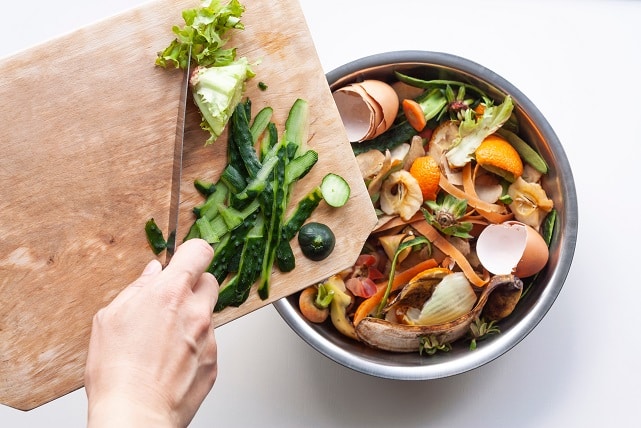
Troubleshooting and Common Challenges
Compost piles or bins can produce unpleasant odors when improperly balanced or aerated.
How to fix it:
- Ensure you have a good mix of green and brown materials.
- Avoid adding meat, dairy, or greasy foods.
- Turn the compost regularly to improve aeration.
- If using a Bokashi system indoors, follow the recommended guidelines and avoid overloading the container with too many food scraps.
If you compost kitchen waste, you risk attracting pests like ants, flies, rodents, or raccoons.
How to fix it:
- Don’t try to compost animal products or fats.
- Bury the leftovers in a trench or use a covered compost bin to minimize access for pests.
- Regularly turn or mix the compost to disrupt nesting sites.
Finding the correct moisture level in the compost can be challenging.
How to fix it:
- If the compost is too wet, add more dry brown material — leaves, wood chips, shredded cardboard, etc.
- If it’s too dry, sprinkle water as you turn the compost or add moisture-rich food scraps.
The process is slow.
How to fix it:
- Ensure you have a good mix of green and brown materials for the correct carbon-to-nitrogen ratio — roughly 25:1 to 30:1.
- Chop larger pieces of fruits and vegetables into smaller bits to speed up decomposition.
- Mix the compost regularly to enable air circulation and provide enough oxygen for the microorganisms (for systems that rely on aerobic digestion).
When you make compost at home with kitchen waste, you risk dealing with more waste than you can handle.
How to fix it:
- Share the load with a community composting program or a local compost facility.
- Start a new composting pile or buy a larger compost bin if you have space.
- Get a biogas system to transform large amounts of food waste into biogas.
Utilizing Kitchen Waste Composting
Incorporating compost into your gardening practices aligns with sustainability and regenerative agriculture principles. It’s a simple yet impactful way to create a more harmonious relationship between your household and the environment.
The nutrient-rich compost provides essential nutrients that improve soil structure, water retention, and microbial activity once released into the environment. Making fertilizer from kitchen waste leads to healthier, more robust, more productive plants that resist pests and diseases.
The compost enriches the soil with nutrients like nitrogen, phosphorus, and potassium, essential for plant growth and fruit production. Compost also helps to balance pH levels, creating an environment conducive to optimal nutrient absorption by plants’ roots. It works for yards, lawns, and fruit and vegetable gardens.
Beyond its physical benefits to plants and soil, producing compost promotes a sustainable lifestyle and a connection to nature. It teaches the value of recycling and waste reduction, transforming trash into a resource. Moreover, composting encourages mindfulness and a sense of responsibility.
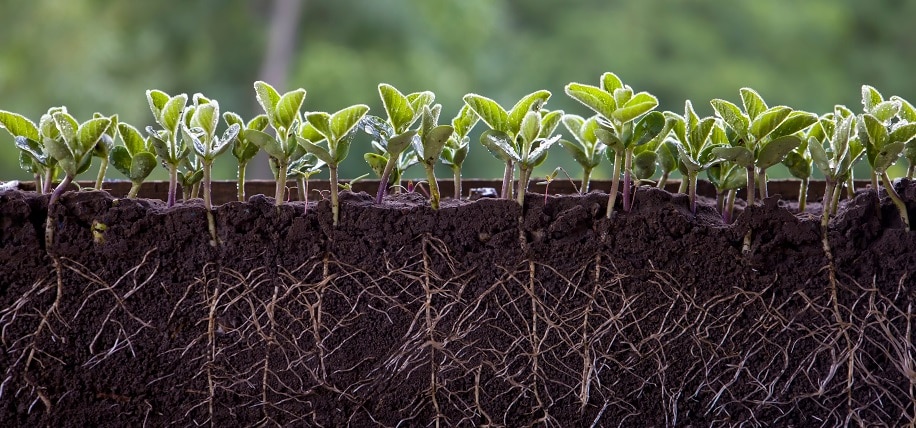
Compost Food Scraps FAQs:
What is the best kitchen waste for compost?
The best way to make fertilizer from kitchen waste is to mix fruit and vegetable scraps, coffee grounds, tea leaves, eggshells, and non-greasy food leftovers. These materials are all rich in nitrogen and break down efficiently. Additionally, incorporating diverse organic matter (crushed leaves, straw, and shredded paper) helps maintain the proper carbon-to-nitrogen ratio, which is essential for a healthy decomposition process.
What are the disadvantages of composting kitchen waste?
A compost pile or bin can attract pests or have unpleasant odors if the carbon-to-nitrogen balance is off. The same can happen if you add items like meat or dairy. Moreover, a too-small backyard or locations in urban environments can make composting challenging due to a lack of space. However, you can mitigate many disadvantages with attention and adherence to best practices.
What nutrients are in the compost?
Nitrogen-rich materials support leafy green growth. Meanwhile, eggshells provide calcium essential for strong cell walls, and phosphorus-rich components like banana peels, leftover grains, or legumes foster root development and flowering. Additionally, the decomposition releases trace minerals and micronutrients like magnesium (Mg), sulfur (S), zinc (Zn), manganese (Mn), copper (Cu), iron (Fe), and boron (B).
Meet HomeBiogas Solutions For Kitchen Waste Management
HomeBiogas supports a holistic approach to waste reduction, renewable energy production, and soil fertility enhancement. Its innovative solutions for kitchen waste management focus on easy-to-use biogas systems designed to convert organic materials into biogas and nutrient-rich liquid fertilizer.
HomeBiogas systems are compact, user-friendly, and suitable for urban and rural settings. They offer a practical way to manage kitchen and yard waste while reducing the carbon footprint associated with waste disposal.
By transforming waste into biogas, households can lower their reliance on conventional fossil fuels, contributing to cleaner energy consumption and reduced greenhouse gas emissions. Additionally, the liquid fertilizer produced can replace chemical substances, promoting organic farming practices for better, healthier food.
What’s Next?
Kitchen waste composting can help you save up to one-third of the food you buy from becoming a source of greenhouse gas emissions. You divert waste from landfills and nurture your soil by transforming seemingly insignificant kitchen scraps into valuable soil gold.
Whether you opt for a traditional compost pile, set up a worm bin, explore Bokashi composting, or utilize a biogas system, the key is to get started and make compost from food waste. Embrace this opportunity to reduce your carbon footprint, enrich the soil, and contribute to a healthier planet.
